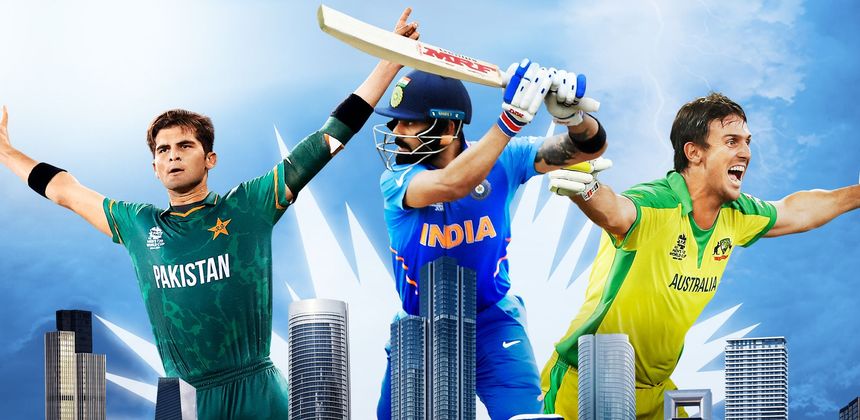New Zealand
Rugby has historically been New Zealanders’ preferred sport, however, similar to Australia, the country also boasts a robust national framework for cricket. Although there is evidence that unofficial matches between provinces were played in New Zealand decades earlier, the first representative interprovincial match, between Auckland and Wellington, in 1860, is frequently cited as the beginning of the lengthy history of domestic cricket in the nation. The NZ Cricket Council was established in 1894 and granted full ICC membership in 1926. New Zealand has traditionally found it difficult to compete with England and Australia in Test cricket because of its tiny pool of talent. In New Zealand, like in the majority of cricket-playing nations, the one-day game has proven to be more popular. The nation gave birth to Richard Hadlee, one of the greatest cricket players of all time, who was knighted in 1990.
Pakistan
Cricket in Pakistan has evolved in nearly equal parts chaos, quixoticity, and exoticity. Pakistan won the 1992 World Cup under Imran Khan’s leadership, although their cricket was frequently marred by political meddling and corruption. A low point was reached in 2010: To start, the national team was practically exiled, unable to convince other nations to play in Pakistan out of concern for terrorist attacks following an attack in Lahore on the visiting Sri Lankan team bus in March 2009 that left six policemen dead and several players hurt. Additionally, the ICC banned three members of the Pakistani squad touring England for their alleged involvement in “spot fixing,” which is the practice of allegedly altering the outcomes of specific bowls in exchange for money. In illicit betting markets in Asia, making predictions about the outcomes of certain bowls might result in enormous winnings.
A few years before, due to investigations into match-fixing, numerous Pakistani players had also been suspended. Khan, Wasim Akram, Abdul Qadir, and Inzamam-ul-Haq are just a few of the brilliant players Pakistan has produced. Pakistan has also demonstrated its proficiency in Twenty20 cricket by winning the T20 World Cup in 2009.
South Africa
The first Test match between South Africa and England was played at Port Elizabeth in 1889. Since then, cricket has remained at the center of the nation’s athletic culture. Cricket administrators covertly tried to incorporate non-white players into the system, which was predominately centered on traditional all-white schools and state teams, during South Africa’s exclusion from the ICC from 1970 to 1991 due to its apartheid practices. Cricket was much more equipped than rugby union to handle the social and political upheavals following the end of apartheid. The new generation of black cricketers looked up to Makhaya Ntini, a world-class fast bowler who made his international debut for South Africa in 1998 and participated in more than 100 Test matches.
On the other side, the integrity of South African cricket was called into doubt in 2000 when Hansie Cronje, the team’s captain, was expelled for match-fixing. It wasn’t until 2003, when South Africa successfully hosted the World Cup, that the nation’s cricketing reputation had fully recovered. Cricket players from South Africa have always been in high demand abroad, especially in England. In the 1980s and 1990s, Allan Lamb and Robin Smith were important players for England; in 2010, the Ashes-winning squad was led by Kevin Pietersen and Jonathan Trott.
Sri Lanka
The island nation was a favorite stop for touring teams long before Sri Lanka received Test status in 1981, especially for English teams traveling by boat to Australia. Given the drawbacks of having a relatively small population and a civil conflict that for three decades disturbed life on the island, Sri Lanka managed to rise to the top of the cricketing world with amazing speed. It defeated Australia in the 1996 World Cup final by playing aggressive, inventive cricket under the inspiring captaincy of Arjuna Ranatunga. Having won, a new group of athletes, including Sanath Jayasuriya, gained confidence;
Mahela Jayawardene, a graceful and powerful batsman, and Muttiah Muralitharan, the first spinner to claim 800 Test wickets in 2010. The 2004 Indian Ocean tsunami killed many prospective young players and completely destroyed the cricket-playing areas of southern Sri Lanka, including the Galle Test match venue. However, Sri Lanka bounced back to make the World Cup final once more in 2007. In 2009, tragedy struck once more when terrorists attacked the Sri Lankan team bus as it traveled to the venue for the second Test against Pakistan in Lahore.
West Indies
Since the West Indies joined the other Test-playing nations as the fourth team in 1928, cricket has served as a uniting factor in the Caribbean. Although the islands have always participated in other sports as sovereign nations, British colonial influence helped to create a cohesive regional squad (cricket bet 1xbet). The West Indies were nearly invincible for a spell in the 1970s and 1980s when they had a fast bowling quintet led by Michael Holding, Malcolm Marshall, Andy Roberts, and Joel Garner, as well as batsmen with the destructive potential of Sir Viv Richards and Clive Lloyd. Caribbean cricket has always been played with an unconventional flair, which is most evident in the batting of Sir Garfield Sobers, Richards, and Brian Lara. The region is blessed with a wealth of great players and genuine wickets.
Due to a lack of effective administrative leadership and the growing attractiveness of potentially more lucrative sports like basketball, football (soccer), and track and field, cricket’s popularity in the West Indies has decreased in the 21st century. The West Indian squad participated in the finals of the first three World Cups (1975, 1979, and 1983), winning the first two, but failed to go past the group stage in the following tournaments, including the one it hosted in 2007 (with the exception of 1996).
